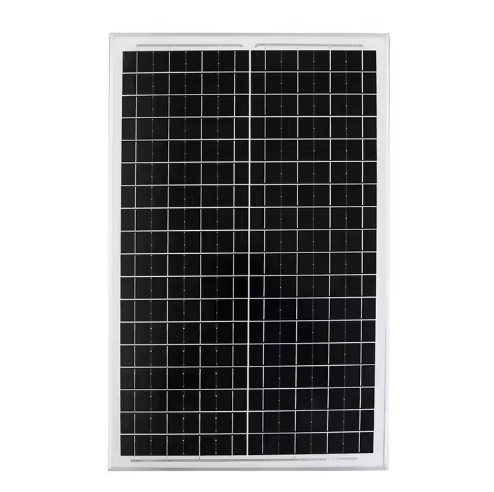Why are more and more homes and businesses choosing to install solar photovoltaic panels?
by
Why are more and more homes and businesses choosing to install solar photovoltaic panels?
Energy bills skyrocketing while the planet warms? Solar panels might be the smart solution you're searching for.
Solar photovoltaic panels are increasingly popular because they reduce electricity bills, increase property value, and provide clean, renewable energy while decreasing carbon footprints and offering energy independence.
The transition to renewable energy is accelerating globally, and solar photovoltaic (PV) systems are leading the charge. Whether for homes or businesses, solar panels offer both immediate savings and long-term benefits that make them an attractive investment despite the upfront costs. Let's explore why this technology is becoming mainstream.
How do solar photovoltaic panels convert sunlight into electricity?
Ever wonder how those shiny panels turn sunshine into usable power for your home?
Solar photovoltaic panels convert sunlight into electricity through the photovoltaic effect: sunlight knocks electrons loose in silicon cells, creating direct current (DC) that an inverter converts to alternating current (AC) for home use.
The Science Behind Solar Energy Conversion
Solar panels contain photovoltaic cells made primarily of silicon. When sunlight hits these cells, photons from the light energy knock electrons free from silicon atoms. This creates an electric field that forces these free electrons to move in a specific direction, generating direct current (DC) electricity.
Here's a breakdown of the components involved:
| Component | Function |
|---|---|
| Solar Cells | Absorb sunlight and generate DC electricity |
| Inverter | Converts DC to AC electricity |
| Mounting System | Secures panels to roof or ground |
| Monitoring System | Tracks energy production |
The efficiency of this process depends on several factors:
- Cell Type: Monocrystalline cells (15-22% efficient) vs polycrystalline (13-16%)
- Sunlight Intensity: More intense light = more electricity
- Temperature: Surprisingly, cooler temperatures improve performance
Modern solar panels can still produce electricity on cloudy days, though at reduced capacity (typically 10-25% of full output). This reliability, combined with net metering programs that credit excess production, makes solar a practical choice for most locations.
What is the difference between solar photovoltaic panels and solar water heaters?
Both use the sun's energy, but serve completely different purposes - do you know which one meets your needs?
Solar photovoltaic panels generate electricity, while solar water heaters use sunlight to directly heat water. PV systems power your entire home, whereas water heaters only provide hot water.
Key Differences Between the Technologies
While both are solar technologies, their applications and mechanisms differ significantly:
Solar Photovoltaic Panels
- Convert sunlight into electricity
- Can power all electrical devices
- More versatile application
- Higher upfront cost but greater long-term savings
Solar Water Heaters
- Use sunlight to directly heat water
- Only provide hot water
- Simpler system with lower maintenance
- Typically lower initial cost
Consider this comparison for clarity:
| Feature | Solar PV | Solar Water Heater |
|---|---|---|
| Output | Electricity | Hot water |
| System Complexity | Higher (with inverter) | Lower |
| Maintenance | Low (mostly cleaning) | Moderate (fluid checks) |
| Average Payback Period | 5-10 years | 3-7 years |
| Suitable For | Whole-home energy needs | Just water heating |
While solar PV offers broader benefits, many homeowners combine both systems for maximum sustainability. Water heating accounts for about 18% of home energy use, so a dedicated solar water heater can complement PV systems in achieving full energy independence.
Can solar photovoltaic panels still generate electricity when it is cloudy or raining?
Bad weather has you wondering if your solar investment will go dark? The truth might surprise you.
Solar photovoltaic panels continue generating electricity in cloudy or rainy conditions, typically producing 10-25% of their full capacity. Modern panels are designed to capture diffused sunlight, though output decreases in poor weather.
Understanding Solar Performance in Various Conditions
Solar panels don't need direct sunlight to function - they utilize any daylight, including diffused light through clouds. Here's how different conditions affect production:
- Cloudy Days: 10-25% of normal output
- Rainy Days: 15-30% (rain helps clean panels)
- Foggy Conditions: 10-20%
- Winter Months: Reduced output due to shorter days
Interestingly, solar panels actually perform better in cooler temperatures. The table below shows typical output variations:
| Weather Condition | Estimated Output | Notes |
|---|---|---|
| Bright Sunny Day | 100% | Ideal conditions |
| Partly Cloudy | 50-80% | Common in many regions |
| Heavy Clouds | 10-25% | Diffused light still works |
| Rain | 15-30% | Cleaning effect helps |
Real-world solution: Most solar systems are connected to the grid or have battery storage to compensate for reduced production during poor weather. Net metering programs credit homeowners for excess production on sunny days that can offset usage during cloudy periods.
Conclusion
Solar photovoltaic panels offer financial and environmental benefits through electricity generation, distinct from solar water heaters, while maintaining production even in cloudy conditions - making them a smart, sustainable energy solution.
Popular Posts
You may also be interested in:




